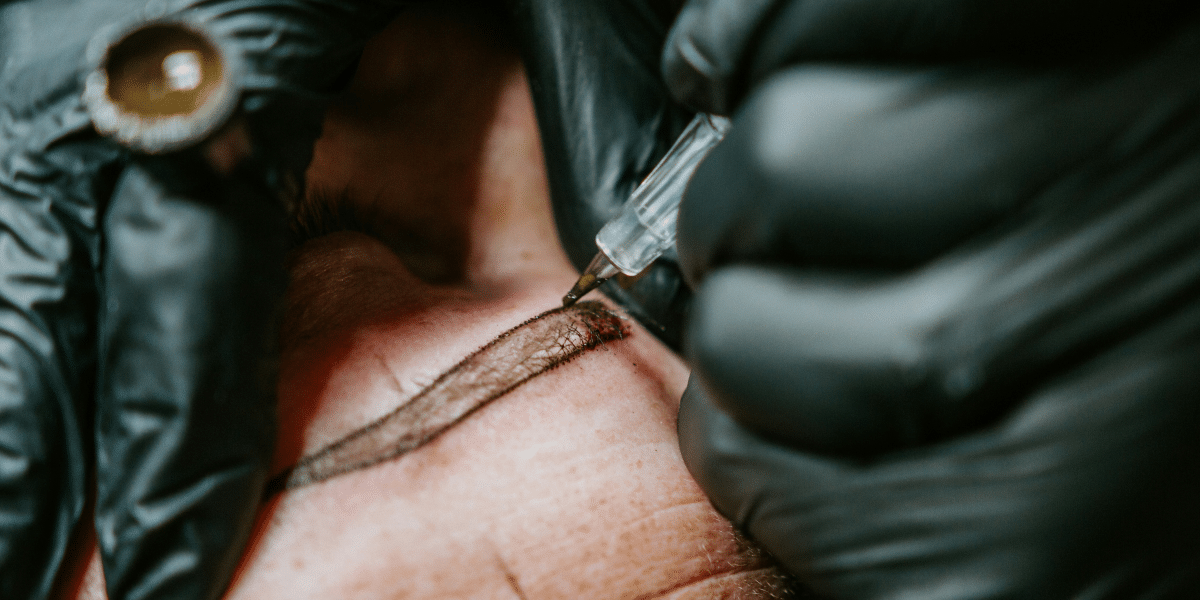Image commercially licensed from Unsplash
Introduction
Microblading has evolved beyond the basic technique of enhancing natural eyebrows. New methods like Ombre and Powder Brows offer diverse options for those seeking personalized eyebrow aesthetics. This article explores these advanced microblading techniques, each offering a unique finish and experience.
Traditional Microblading
- Technique: Involves creating fine, hair-like strokes with a handheld tool, embedding pigment into the skin.
- Ideal For: Those seeking natural-looking enhancement to their existing brows.
Ombre Brows
- Technique: Ombre brows feature a gradient appearance, with a lighter front and gradually darker towards the tail.
- Appearance: Gives a soft, shaded pencil or powder look, more subtle than traditional microblading.
- Ideal For: Suitable for all skin types, especially those with oily skin where hair strokes might blur.
Powder Brows
- Technique: Similar to the Ombre technique but offers a fuller and more defined brow, resembling the look of powdered makeup.
- Longevity: Tends to last longer than traditional microblading, making it a preferred choice for longevity.
- Ideal For: Those desiring a more dramatic, makeup-like effect.
Combination Brows
- Technique: A blend of microblading and shading techniques, creating both natural strokes and a powdered effect.
- Versatility: Offers the realism of hair strokes with the density and fullness of shading.
- Ideal For: Best for those wanting a natural yet defined brow.
Nano Brows
- Technique: Uses a digital machine with ultra-fine needles, creating precise hair strokes.
- Precision: Offers more precision compared to traditional microblading, especially beneficial for finer details.
- Ideal For: Those looking for highly detailed and natural-looking eyebrows.
Microshading
- Technique: Involves creating pin-like dots to mimic the look of natural shadows in the brows.
- Softness: Provides a softer, fuller look compared to microblading.
- Ideal For: Great for those with sparse brows seeking a gentle fill without the sharpness of strokes.
3D/4D Brows
- Technique: Incorporates various lengths and colors of strokes, creating a multi-dimensional look.
- Realism: Mimics the natural variance in real eyebrows, offering a highly realistic appearance.
- Ideal For: Perfect for those who lack natural hair or have patchy brows, seeking a realistic eyebrow reconstruction.
Considerations for Choosing a Technique
- Skin Type: Oily, dry, or combination skin can affect the choice of technique.
- Desired Outcome: Preferences for natural, subtle, or bold brows influence the decision.
- Maintenance and Touch-ups: Consider the longevity and frequency of required touch-ups.
Conclusion
The world of microblading has expanded to include a variety of techniques, each tailored to different preferences and needs. From subtle, natural enhancements to bold, makeup-like finishes, these methods offer versatility in achieving the desired eyebrow look. Understanding the nuances of each technique and consulting with a professional can guide individuals in making the best choice for their unique facial features and lifestyle.
Additionally, advancements in microblading pigments and tools have contributed to longer-lasting results and improved precision. As the popularity of microblading continues to grow, staying informed about the latest trends and innovations in the field can empower individuals to make well-informed decisions for their beauty routines.Furthermore, the ongoing evolution of aftercare practices, such as specialized balms and serums, plays a pivotal role in enhancing the healing process and maintaining the vibrancy of microbladed eyebrows, emphasizing the importance of a comprehensive approach to achieve not only immediate satisfaction but also lasting beauty.


















